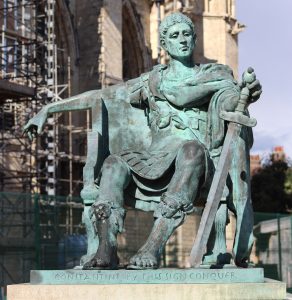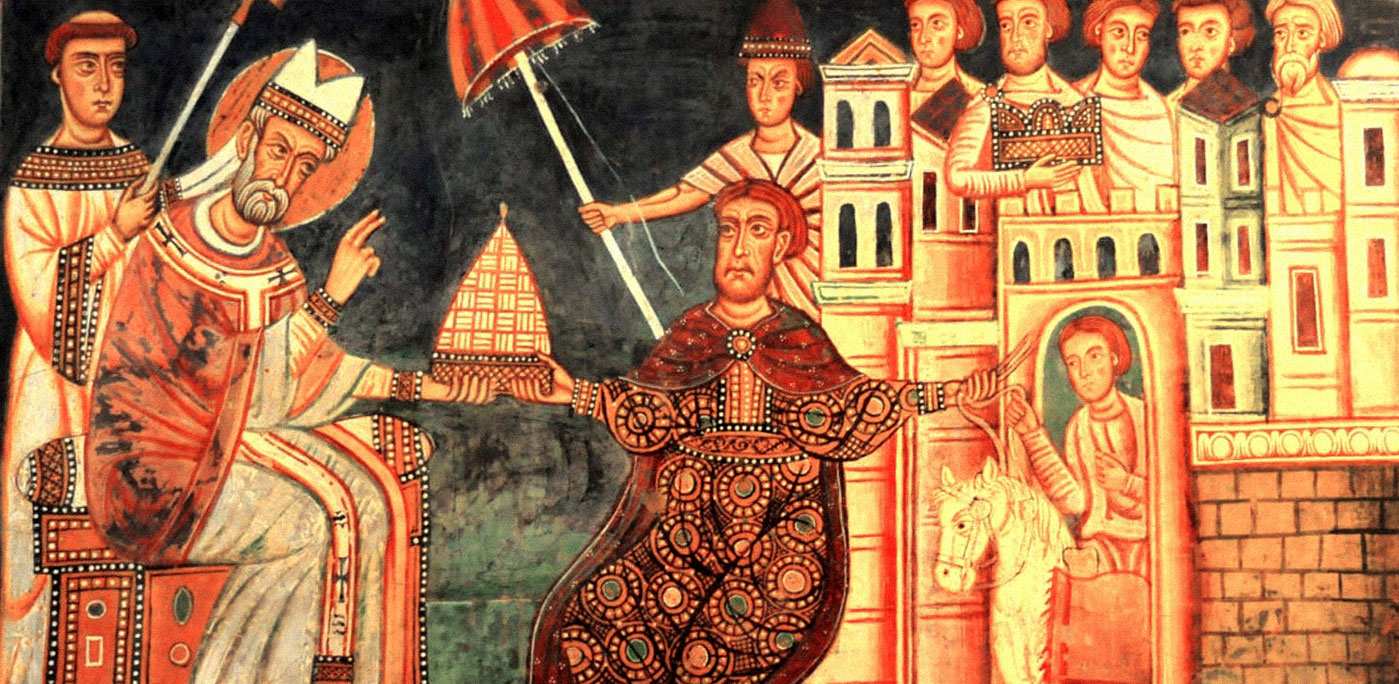History and art have a lot of things in common, of course. One of them is certainly the importance, nay, the essentiality of the concept of authenticity: an art piece is valuable and meaningful only when authentic, just as historical accounts gain relevance only and exclusively on the basis of the soundness and reliability of their sources. Yet, we all know it too well, forgeries are everywhere: paintings, historical documents, poems, novellas, you name it: if it exists, dear, it can be forged. Art forgery is probably the most commonly known by all of us, especially because of the enormous amount of money it creates, yet, there are other forms of it that did affect, in the past, the course itself of history and the way the world evolved.
Italy, land of artists, poets sailors and certainly forgers, has a fairly long list of flamboyant examples of fakes in history and in art, of yesterday and yesteryear, all ingenious in their own way, fascinating to narrate, interesting, I truly hope, to read about.

The Roman Emperor Constantine (c. 280 – 337 A.D.) was one of the most influential personages in ancient history. By adopting Christianity as the religion of the vast Roman Empire, he elevated a once illegal cult to the law of the land. Copyrighted work available under Creative Commons Attribution — See page for author / CC BY
The first of our series is the mother of all forgeries, a fake so big it’s pure genius, a fake that piloted the history of Europe from Late Antiquity to the very middle of the Renaissance, when Italian philologist Lorenzo Valla proved without the shadow of a doubt it was, indeed, a forged document.
The Constitutum Constantini or, in English, the Donation of Constantine is, in short, the document upon which the medieval church based its temporal and universalistic claims. The Constitutum, which got to us in the 9th century Pseudo-Isidorian Decretals and, by interpolation, also in the 12th century Decretum Gratiani, bears the date 315 AD and is supposed to be the reproduction of an imperial decree, signed by Emperor Constantine I himself, where he bestowed on the Pope of the time, Sylvester I, and consequently on all of his successors, a series of advantages.
And what advantages: the supremacy of the Bishop of Rome (the Pope) upon all Eastern patriarchal churches, his sovereignty over all priests and that of his Basilica, the Lateran, over all churches. More important of it all, Constantine also stated the ultimate superiority of papal over imperial power. Considering this last statement, you can easily imagine why it became such a powerful instrument of domination and why it remained so for many centuries. As it was customary at the time, the fact the actual original of the document was no longer extant didn’t make much of a difference: those versions copied in medieval manuscripts were more than sufficient to establish the Constitutum’s existence.
If you’re a little familiar with Europe’s medieval history, you probably are aware of how much of it revolved around the eternal power struggle between the Empire and the Papacy: well, according to the Constitutum, there was no need to fight and discuss, the Emperor was a subject of the Pope, and that was it. For medieval popes, recalling the document if the emperor got cockier than usual was as normal as it is for us today to drink coffee in the morning: it comes as no surprise, then, to learn that already in 1001, emperor Otto III had been claiming it was a forgery, the wicked work of John the Deacon, aka the maimed one because his nose, tongue and fingers had been cut off after he was accused of treason.
In truth, the author of the Constitutum remains a mystery still today, even though it’s now believed the document probably originated around the 8th century AD and that it may have been modified several times before making it into the Pseudo-Isidorian Decretals.
Anno Domini 1440. Enters Lorenzo Valla, humanist, philologist, known for his bad temper. It didn’t take him long to understand the document was a blatant forgery. Actually, it was so incredibly obvious it’s almost incredible it was taken seriously for so many centuries. Valla immediately pointed out the Constitutum presented serious historical anachronisms: in spite of carrying the date 315 AD, for instance, it used the toponymal “Constantinople”, even though the city of Byzantium changed its name to honor Constantine I only in 330. This is only one of the many reasons, historical, linguistic and philological, Valla brought about to confute his theory and finally debunk that forged myth the Constitutum Constantini had been for more than four centuries.
Valla’s work became known and served its purpose well, even if Pope Alexander VI, our beloved Rodrigo Borgia, just pretended it didn’t exist when he tried, in 1493, to claim possession of the just discovered lands of America in name of the Constitutum’s content. If the political side of the Church may have sent a curse or two to Valla, the large majority of priests, brothers and religious laymen (including Dante) were relieved: the document didn’t enjoy great popularity among them, who tended to consider it a symbol of the more mundane and materialistic side of Catholicism.
One last curiosity: the forgery contains within another forgery. Indeed, the Constitutum narrates the events bringing to Emperor Constantine I’s own conversion to Christianity, making it a pretty different affair from how it historically happened. It’s known through relevant sources that Constantine, very likely, converted while on his deathbed, but that didn’t matter to the Constitutum’ author, who envisions a plague ridden Emperor, advised by some unsavory character to bathe in the blood of just killed children to heal. While resting, possibly considering the quickest and most effective way to collect blood from a fresh corpse and carry it to his palace, the Emperor received the visit of Saint Peter and Saint Paul in a vision, who told him to forget about the blood and bathe in the water of Baptism instead.
We may not know who he was, but one thing’s certain: the author of the Constitutum Constantini was an outstandingly creative writer.






























